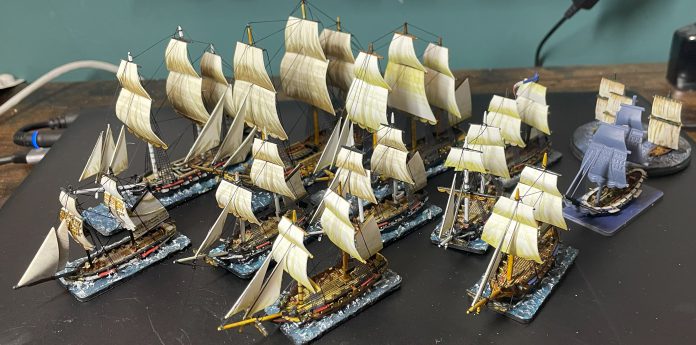It’s absolutely no surprise that I, and many of the other Goonhammer Historicals authors, are fans of Patrick O’Brian’s Aubrey-Maturin series, and with my thoughts turning to the Portsmouth-and-Chatham-dockyards worth of plastic, resin and metal ships in my build queue, it’s time to finally talk about how to put Aubrey on the table. This article will go through the major ships featured in the Aubrey-Maturin series, how to build them easily in 1/700 scale, and how you could represent their capabilities on the ocean (which, incidentally, is now a battlefield).
I’m hugely indebted to the work of Bruce Trinique and his Ships of Jack Aubrey website, which made this a lot easier! Where I’ve suggested some points and/or weapon changes, everything has been playtested against the dastardly french and spanish, but entirely in solo play so be warned! These are minor changes for a little more flavour, but they would change up your approach, particularly with the smaller ships.
HMS Sophie
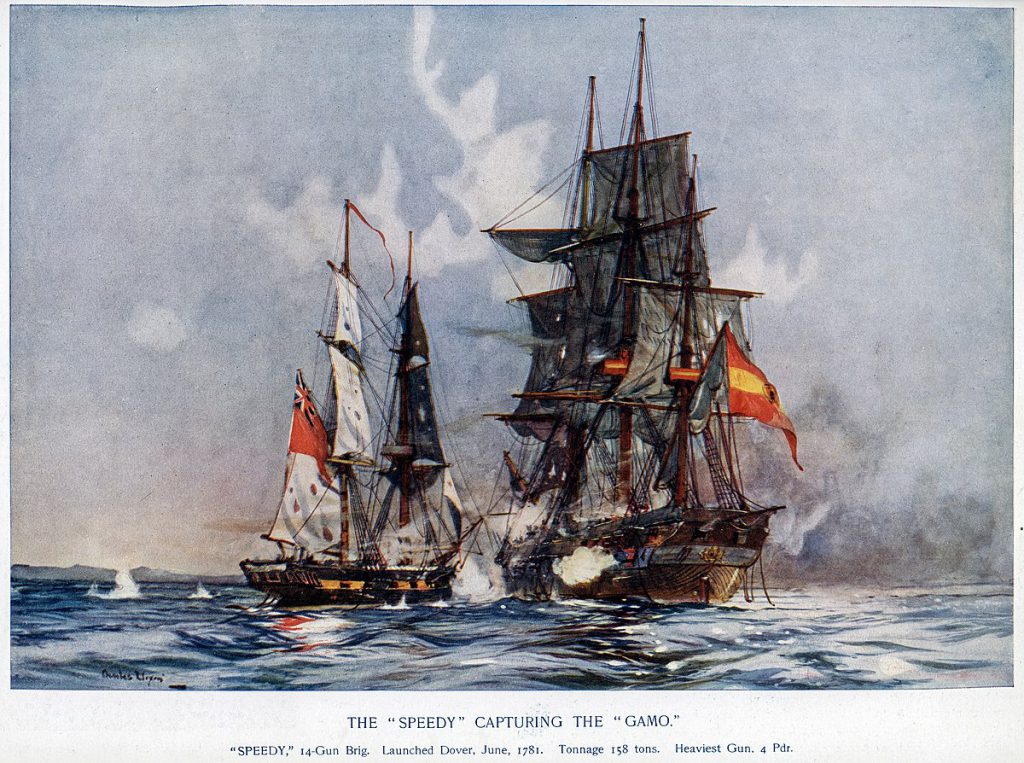
Jack’s first command is the sloop HMS Sophie, featuring in Master and Commander, the first novel in the series. HMS Sophie is fondly remembered throughout the series, with the “Old Sophies”, Jack’s first crew under his command, featuring as recurring and dogged seamen throughout 21 books. The Sophie is “brig-rigged” – two masts, both square rigged – and is based on the real life HMS Speedy, commanded by Aubrey’s real life inspiration Jack Cochrane.
The Sophie is pretty straightforward to model – Warlord has it’s own version of the Speedy, and most other manufacturers of ships in any scale will have a version of it. Mine is the delightful Turner Miniatures Sloop – the only difference being the lack of the (unusual) Quarterdeck. In game, she’s a Sloop – light, quick and armed with one Heavy and one light cannon.
HMS Polychrest
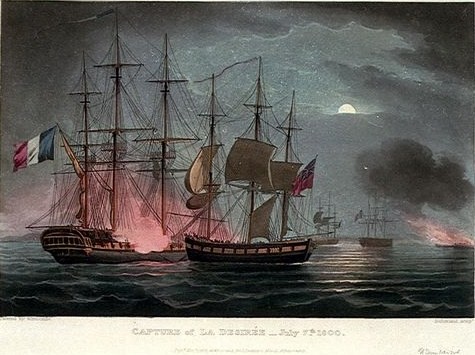
Engraving after a painting by Thomas Whitcombe showing HMs Dart capturing French frigate Désirée in July 1800. Wikimedia Commons
I love the Polychrest much more than Jack, the “carpenter’s mistake” with an unusual design that leads, inevitably, to severe damage and sinking in Post Captain. The Polychrest has sharp ends at bow and stern, giving it unusual handling characteristics and a decided tendency to miss stays (turn poorly). The Polychrest is based on the real life Dart class, but miniatures of this unfortunate experiment are few and far between.
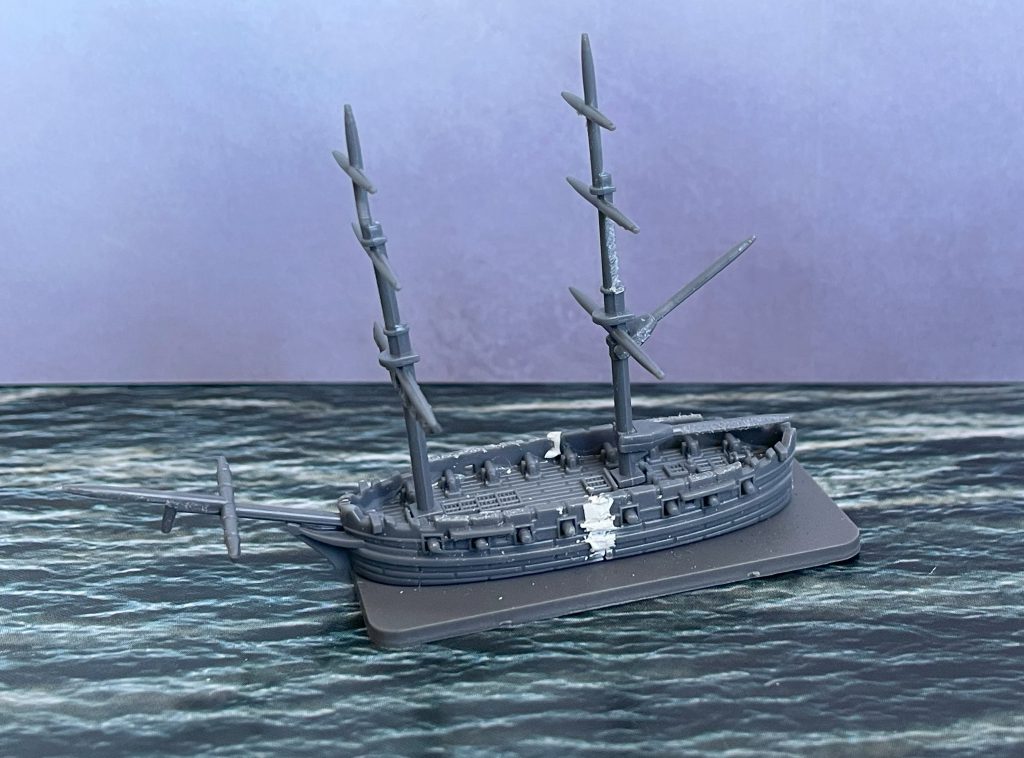
To convert up a Polychrest, I took two plastic Brigs and cut them in half, sticking both “pointy” ends together to make this particularly weird ship. In game, you could easily count this as a Sloop, though with it’s many terrible qualities it would be fun to downgrade the turn angle to yellow and perhaps drop the points by 5-10!
HMS Lively
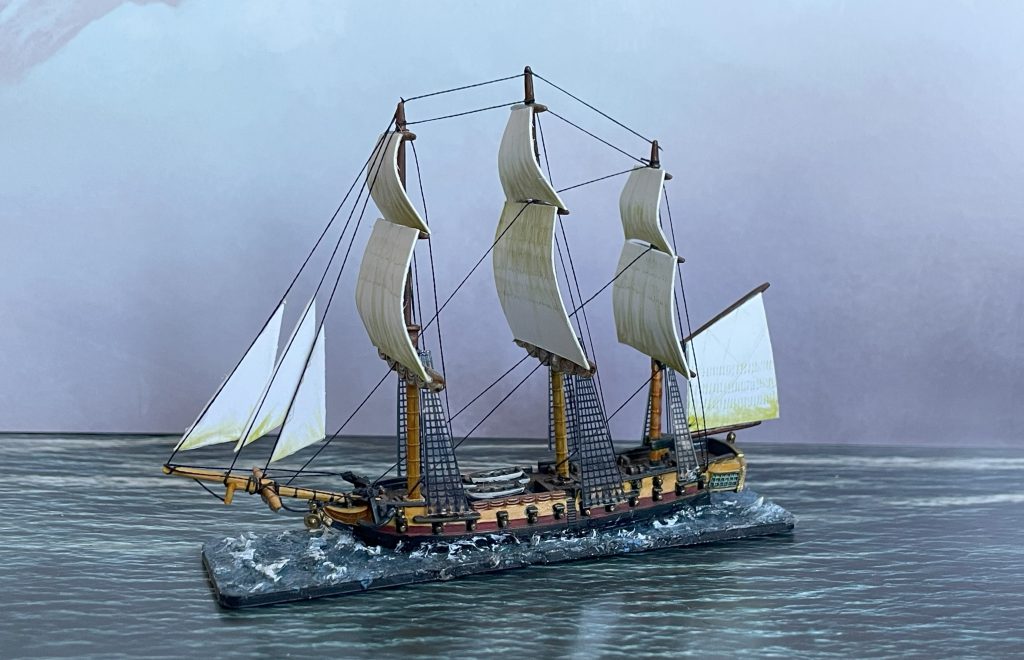
The Lively, a high quality 38 gun frigate, is a temporary posting Jack receives in HMS Surprise. He’s not in command for very long – and the Lively was a real frigate – so we don’t have to spend all that much time on it! A plastic frigate model – and 5th rate rules – will do the trick, though if you’re absolutely detail obsessed you might want to turn to Turner Miniatures again and pick up the HMS Lively sculpt.
HMS Surprise

The Queen of ships has arrived! Jack first commands the Surprise in the book of the same name (rather obviously), and returns to it throughout the series. Through a succession of contrivances that always seem very justified, Jack and Stephen spend most of their time in the Surprise, honing a crew of smugglers, man-of-war-men and, of course, Killick. The surprise is a small frigate of 28 guns, with Jack switching out long guns and carronades as required.
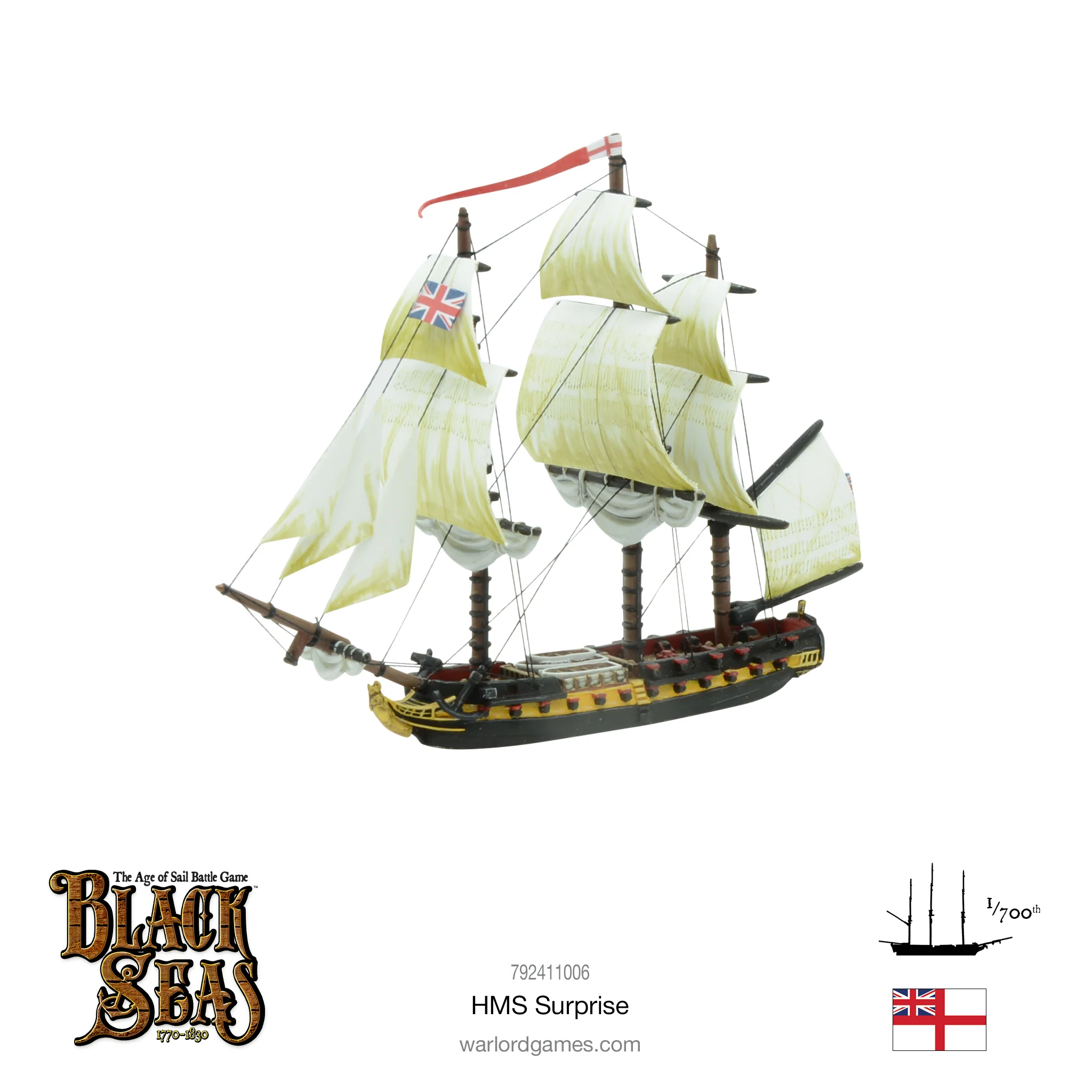
As the most famous and enduring ship of the series, there’s a specific Warlord model for this one, which looks to be pretty accurate to the movie version at least. Turner Miniatures also has a version, which is what I’ve gone for (but haven’t painted yet!). One important detail is that the Surprise has a very tall mainmast, designed originally for larger frigates – sticking a plastic frigate mast into the Turner Miniatures hull has worked well without looking unduly disproportionate.
At 28 guns, the Surprise would come in as a 6th rate Frigate – 1 heavy, 1 light and 1 carronade. You could represent Jack’s prized bow/stern chasers with a single additional light cannon in the Bow, upping the cost by five points to suit. Otherwise, we’ll leave her there – without Jack’s excellent seamanship, she’s a nice barky, but nothing out of the ordinary.
HMS Boadicea
Jack’s command ship for the Mauritius Campaign, the Boadicea was another real-life frigate of 38 guns. Everything that stands for the Lively works here, though if you wanted to mix up your designs a little, the Endymion class Frigate has some of the foredeck features of the real life Boadicea.
HMS Raisonable
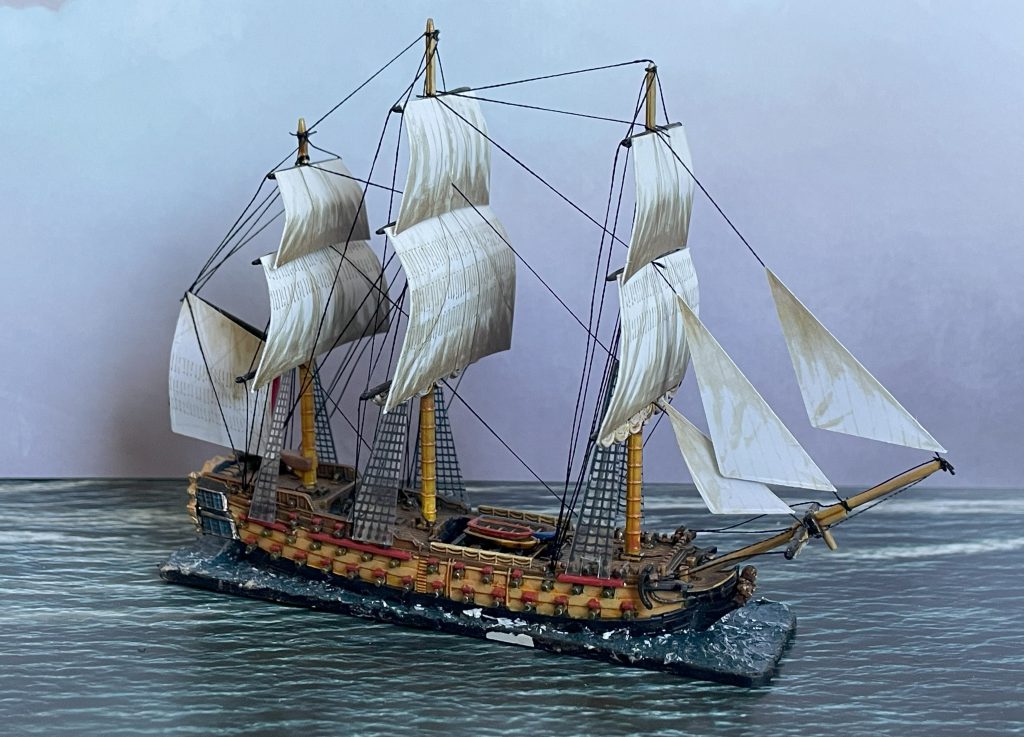
A temporary command on a solid 64 gun ship of the line, the Raisonable was an elderly, leaking third rate by the time Jack takes command in the Mauritius Campaign. We can use a plastic third rate model for her, using the Small Third Rate rules to represent a ship towards the end of it’s useful lifespan. Jack’s Raisonable lacks carronades, so switching out the Carronade for an additional light – possibly in the stern for Jack’s prized guns – seems like a reasonable adjustment.
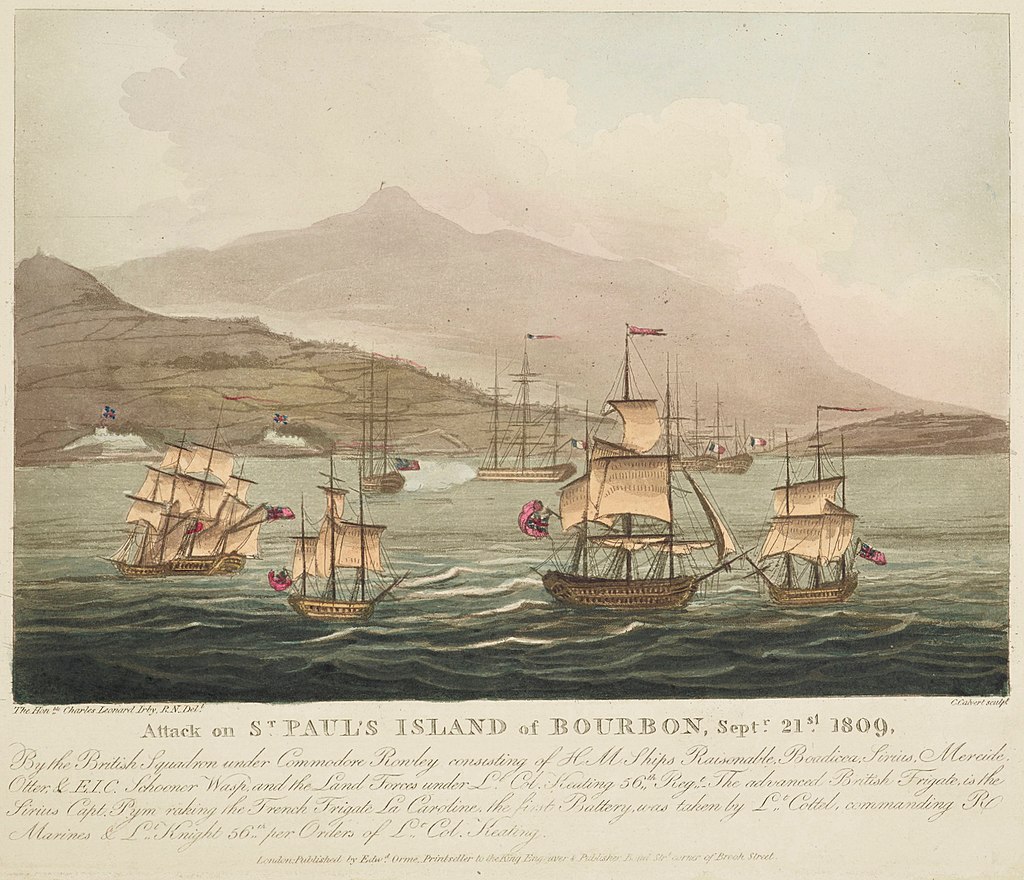
HMS Leopard
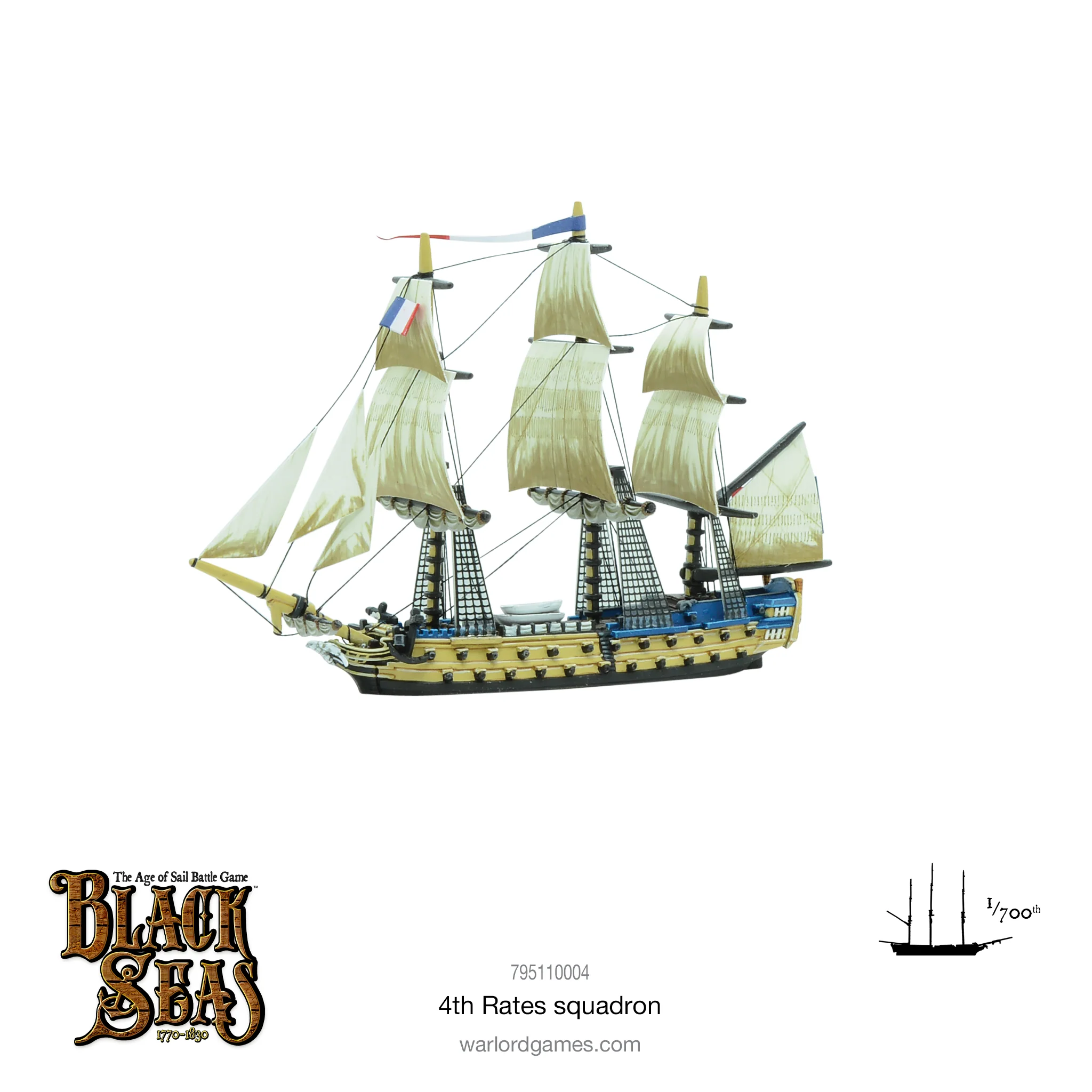
The Horrible Old Leopard, commanded by Jack in Desolation Island and, briefly, in The Fortune of War. The Leopard spends much of it’s time limping and leaking around, before getting hit by an iceberg and nearly sinking. It’s a Fourth Rate of 50 guns, which would be nicely represented by the Warlord 4th rate, or go for exact with the Turner Miniatures Portland class. Because it’s legendarily horrible ship though, dropping the ship points to 36 and the turn angle to yellow would represent Jack’s struggles with her – putting her at a serious disadvantage on the battlefield!
HMS Ariel
O’Brian played around with the “rules” of the Royal Navy quite a lot, with Jack’s next command after returning to England in The Surgeon’s Mate being the HMS Ariel, a tiny 18 gun sloop used in the book almost entirely to hang around the Baltic doing shenanigans. Most Sloop models will be too big and too chunky to represent the tiny Ariel, so I’d recommend picking up either a Turner Miniatures Ship-Sloop or Gun Brig, really selling the size difference between this and anything else on the board.
The Ariel had serious teeth though with 16 32lb carronades. You could use the Sloop rules, but switch out both heavy and light guns for carronades. If you can get up close, the Ariel will pack one hell of a punch – but that’s a big, big “if”.
HMS Worcester
Another ship that Jack doesn’t get on with, the Worcester was part of a group of ships called (in the novels – and possibly in real life?) the Forty Thieves, Third Rates allegedly made on the cheap by dodgy shipyards trying to save money through cutting corners. Jack’s on the Worcester during the Ionian Mission, spending most of his time sailing around the Mediterranean on semi-shady business.
The Worcester is a third rate, which can be easily represented with the plastic third rate sprue – the detail oriented will want to look for the Surveyor Class third rate to get an exact match.
HMS Diane
Long promised, Jack recieves the Diane in The Thirteen Gun Salute after his reinstatement to the Navy. The Diane is described as a french-built, stout frigate of 32 guns, with the toughness of a much larger ship. You could, again, use the standard Frigate model, but in the interests of mixing things up and giving it a tougher look from a distance, I’d use American frigate models – the USS Essex would do – to give you a stouter, reinforced frigate.
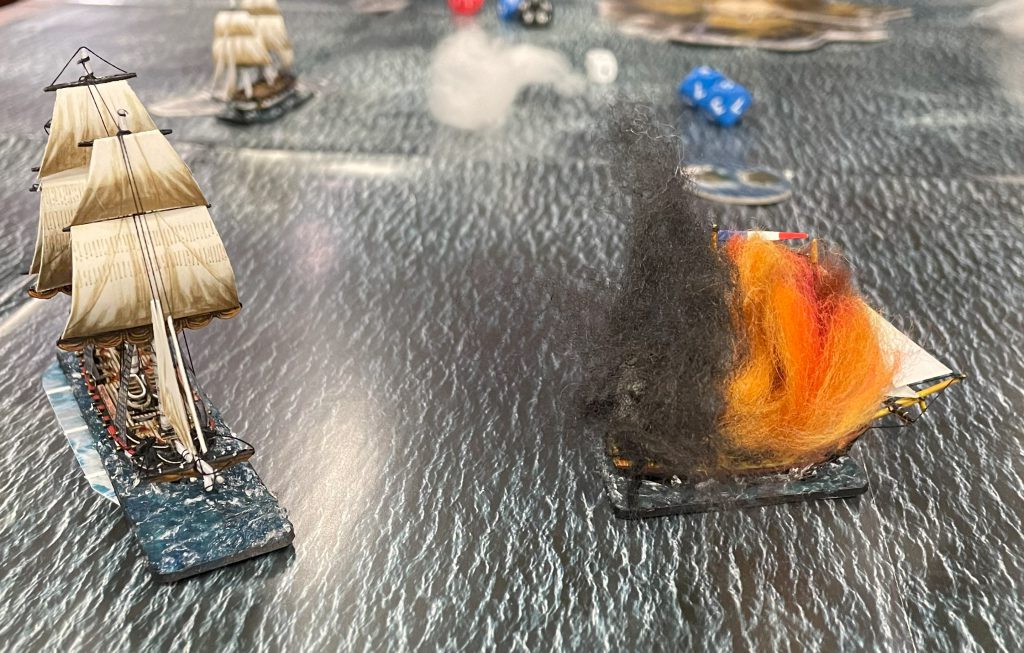
Representing the Diane on the table could be as simple as taking it as a 5th rate, the increased ship points and armament more than showing off it’s clean lines, good gunnery and reinforced scantlings.
The Nutmeg of Consolation
The best named ship in Aubrey’s record, the Nutmeg is a salvaged 20-gun dutch-built ship Jack commands after the wreck of the Diane in the obvious book – the Nutmeg of Consolation. A 20-gun ship is a weird one, and I’d be tempted to go with something with a very distinct look – either a small merchant vessel, sloop, or plastic brig.
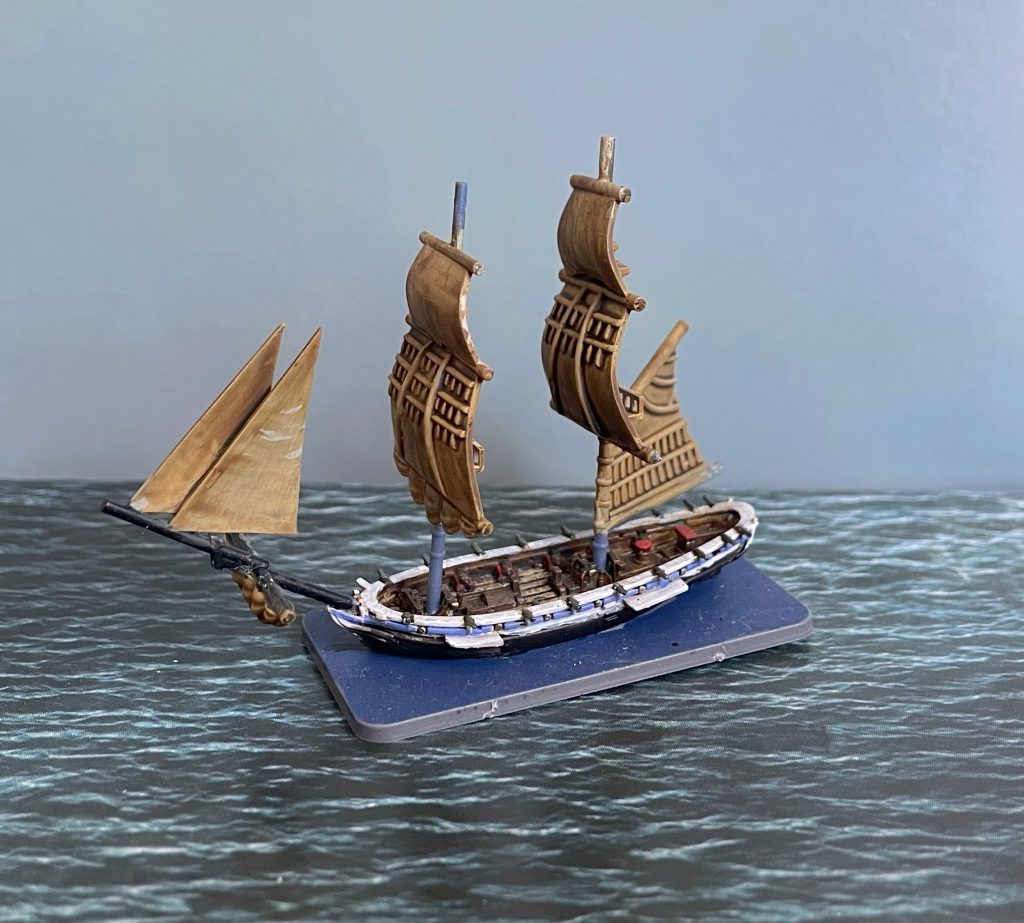
On the table, the Nutmeg shouldn’t be a massive warship, and we could stick to it’s roots as a Dutch trading/war/privateering vessel by using the small merchant stats – with it’s “broad buttocks” it’s not going to turn well, but it’s significantly chunkier than a brig with 28 ship points.
HMS Bellona
The Bellona is Jack’s largest command, where he hoists his broad pennant to take on slavers off the coast of West Africa after the first defeat of Napoleon. The Bellona is a pleasant ship, easy to handle in tough weather and bristling with 74 guns. Again a real life ship, the Bellona was one of only a few of this form of third rate, a prototype for the much more prolific 74s of the later war. Instead of the plastic third rate (as much as I love it), use the Turner Miniatures Bellona with closed ports to represent Jack weathering the West African storms!
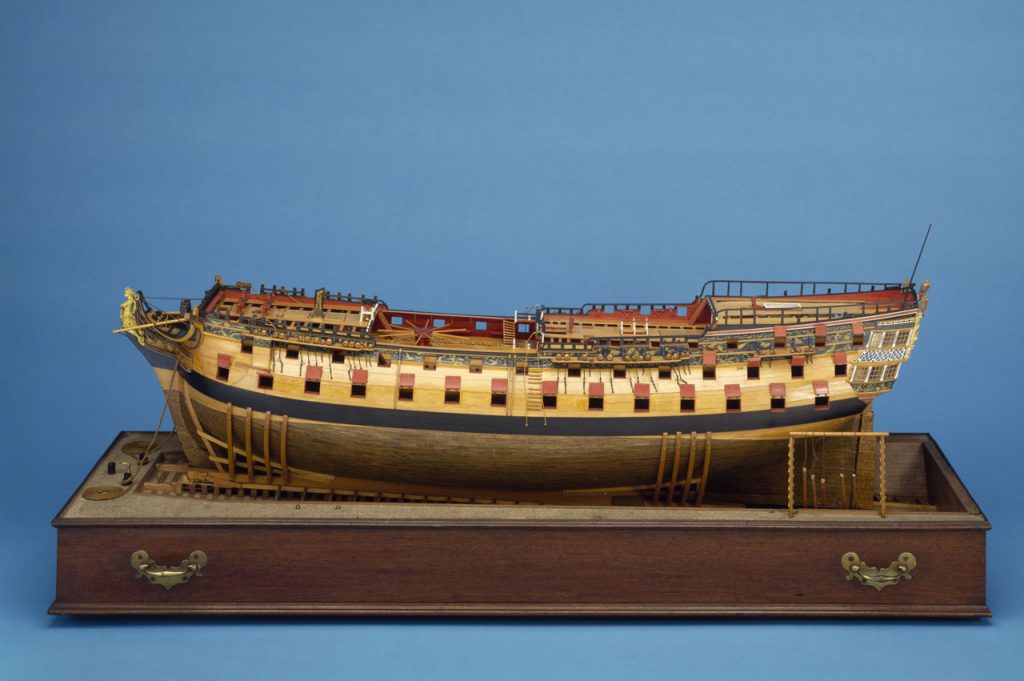
HMS Pomone
The last non-Surprise vessel Jack commands in the series, the Pomone is a temporary assignment during the 100 Days, on a slightly ludicrous but great fun mission to intercept a vast amount of gold from North Africa heading to fill Napoleon’s coffers. In the book, the Pomone gets a bit of a battering in tough conditions tracking down a large xebec filled with treasure, and as a captured French Frigate (much like the Surprise!) use whichever HMS Surprise model you didn’t pick up for that one here!
Of course, Jack returns to the Surprise for his final voyage, sailing off into the sunset forever on his favourite ship – after the long awaited mission to South America – and there we’ll leave him until we return to Aubrey and Maturin to examine how we can represent the men themselves, and their various associates, on the tabletop.
Have any questions or feedback? Drop us a note in the comments below or email us at contact@goonhammer.com. Want articles like this linked in your inbox every Monday morning? Sign up for our newsletter. And don’t forget that you can support us on Patreon for backer rewards like early video content, Administratum access, an ad-free experience on our website and more
